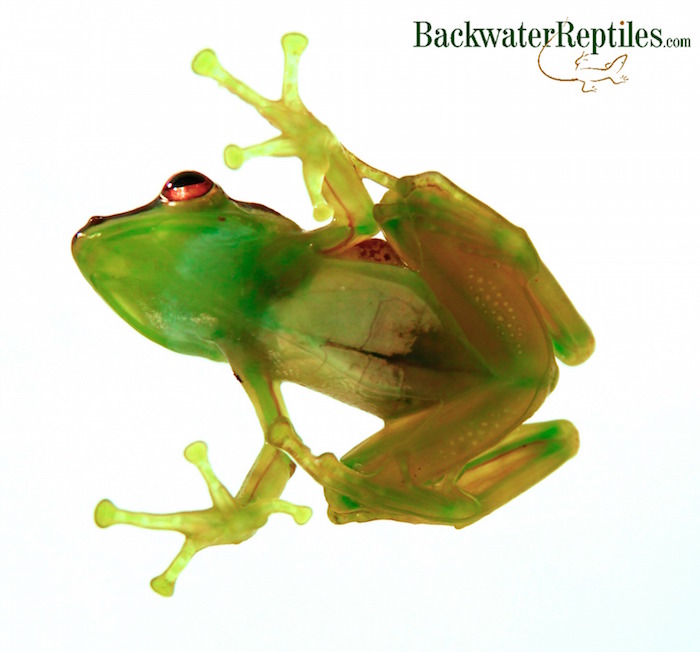There are many varieties and subspecies of Glass Frogs (Hyla sp.), but the thing most of them have in common is the transparent nature of their skin and the visibility of their organs due to this unique trait. This fascinating feature makes them interesting to look at as well as great topics of conversation.

Backwater Reptiles received a shipment of Glass Tree Frogs, many of which are about the size of a dime. In general, these frogs stay very small, ranging in size from one to three inches in length, so the ones at Backwater will probably grow a bit larger, but should stay very small overall.
In addition to being arboreal, Glass Frogs are also nocturnal and are commonly found in streams in the wild. Overall, males hang out in vegetation around streams at night, while females have proven more elusive to scientists during non-breeding seasons. Typically, males and females can be hard to distinguish from one another, unless eggs are visible through the underbelly skin of the female.
In captivity, these frogs should be housed in a terrarium with plenty of climbing space and vegetation as well as plenty of water. The enclosure needs to be well-ventilated, but prevented from becoming too dry. Appropriate lighting is also necessary.
Glass frogs will eat small arthropods in the wild and their diet should include appropriately sized insects in captivity. These little guys have hearty appetites and will eat a lot if given the opportunity. Most species lunge at their prey to capture it and have very good aim.
If you’re interested in adding one of these beautiful and rare frog gems to your collection, Backwater Reptiles has Glass Tree Frogs for sale just like the one pictured in this blog.


